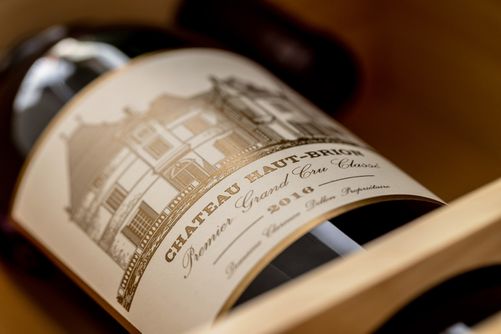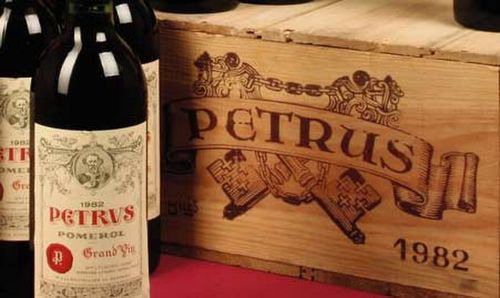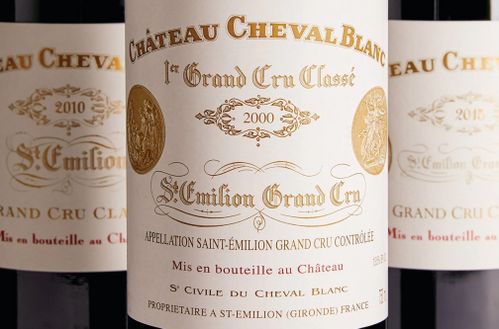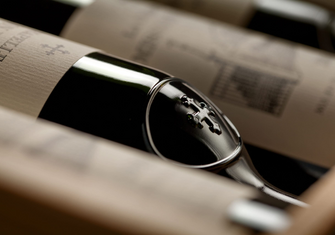Don't miss your chance to boost a wine portfolio with a selection of lower-priced Bordeaux 2023
Early releases of the new Bordeaux 2023 en primeur wines have hit the secondary market at prices up to 40% down on the 2022 vintage release prices. The chateaux have responded to market demand, reviving the appeal of buying wine in-barrel. This provides a rare opportunity to buy a parcel of superb Bordeaux wines at release.
Looking at the critics' scores for the 2023 vintage it is very clear that this is a good year with some very highly scored wines, but as we have commented previously, not uniformly so. Investors need to be selective on quality whilst keeping a keen eye on price.
How to create a diversified 2023 Bordeaux wine parcel
Once you have decided you want to take advantage of the en primeur prices available in this campaign, you have several ways to create a diversified parcel of investment-grade 2023 wines. Some of the obvious options are to diversify by classification, Right Bank / Left Bank, by appellation, brand and critics’ score.

Why choose investment wines by Classification
Lower-classifying wines can achieve equally high critical scores to First Growths but are available at lower prices. Starting at a lower price point can deliver stronger returns. Some parallels to 2023 have been made to the 2016 vintage.
| Wine | Classification | 2023 Score / critic | 2016 score / critic | 2016 Growth since release |
|---|---|---|---|---|
| Carruades de Lafite | Second Wine to First Growth | 95 - 96 / JS | 94 / LPB | 61.45% |
| Pichon Lalande | Second Growth | 98 – 99 / JS | 99 / LPB | 57.9% |
| Beychevelle | Fourth Growth | 94 – 96 / AG | 95 / NM | 38.64% |
| Montrose | Second Growth | 99 – 100 / JS | 100 / LPB | 28.71% |
| Leoville Poyferres | Second Growth | 98 – 99 / JS | 99 / LPB | 18.57% |
| Palmer | Third Growth | 98 – 100 AG | 98 / NM | 12.66% |
| Lafite Rothschild | First Growth | 97 – 99 / WA | 98 / LPB | 11.37% |
Source: Liv-ex.com 13.05.24
Wine selection by classification
Higher classified wines naturally command a premium, in fact their ranking was partly founded on the higher prices those wines commanded in the market. The 1855 Bordeaux Classification was established at the request of Emperor Napoleon III to guide the market in the best Bordeaux wines. The key merchants of the time ranked the wines in order of the prices they were traded at routinely. Price was determined by quality and brand recognition of the great estates producing those wines. The 1855 Classification ranks wines from First to Fifth Growths and this system remains in place to guide the market today on the key Left Bank wines.
Important 1855 Classification wines for investors
(Note - this is not a comprehensive listing of 1855 Classification wines)
| Ranking | Chateau | Appellation |
|---|---|---|
| First Growth | Haut Brion Lafite Rothschild Latour, Pauillac Margaux Mouton Rothschild | Pessac Leognan Pauillac Pauillac Margaux Pauillac |
| Second Growth | Cos d’Estournel Ducru Beaucaillou Gruaud-Larose Leoville Barton Leoville Las Cases Leoville Poyferre Pichon Longueville Baron Pichon Longueville Comtesse de Lalande Montrose Rauzan-Segla | St Estèphe St Julien St Julien St Julien St Julien St Julien Pauillac Pauillac St Estèphe Margaux |
| Third Growth | Calon-Segur Giscours D’Issan Malescot-St. Exupery Palmer | St Estèphe Margaux Margaux Margaux Margaux |
| Fourth Growth | Beychevelle Duhart-Milon Talbot | St Julien Pauillac St Julien |
| Fifth Growth | Grand Puy-Lacoste Lynch-Bages Pontet-Canet | Pauillac Pauillac Pauillac |
| Superior First Growth (white) | Yquem | Sauternes |
Investment in wine began with the ‘blue-chip’ 1855 Bordeaux First Growths. Their brand equity, quality, supply levels and liquidity translate to cornerstone investments in a robust fine wine portfolio. However, it’s important to remember that some lower classification wines achieve equally high critical scores to First Growths, are available at lower prices and can also deliver stronger returns.
Investing in wines outside of the 1855 Classification
The original classification focused on the wines of the Medoc and Graves as these were the most traded wines in international markets originally and this was likely helped by the access to their location on the Left Bank, close to the Gironde River and the port of Bordeaux provided historically. Over time the superb wines of St Emilion, Pomerol and Pessac became equally sought after and some appellations established their own classifications in time.
Pessac Leognan produced the only First Growth outside of the Medoc, Chateau Haut Brion*, and is also represented in The 1959 Graves Classification.

Important 1959 Graves Classification wines for investors
(Note - this is not a comprehensive listing of 1959 Graves Classification wines)
| Crus Classé producers | Commune |
|---|---|
| Haut Brion* | Pessac |
| La Mission Haut Brion | Pessac |
| Haut Bailly | Leognan |
| Malartic-Lagraviere | Leognan |
| Pape Clement | Pessac |
| Smith Haut Lafitte | Martillac |
The Right Bank (of the Gironde) estates were not included in the 1855 Classification. St Emilion established its own Classification in 1955 and this is updated every ten years.
Important St Emilion Classification 2022 wines for investors
Note this is not a comprehensive listing of current St Emilion Classification wines
| Ranking | Chateau |
|---|---|
| Premier Grand Cru Classe A | Figeac Pavie |
| Premier Grand Cru Classe B | Beausejour (Duffau Lagarosse) Canon Clos Fourtet Pavie Macquin Troplong Mondot Valandruaud |
| Former Cru Classe A | Angelus Ausone Cheval Blanc |
There has been controversy across the decades and three of the top four Classe A estates, Angelus, Ausone and Cheval Blanc withdrew in 2021 ahead of the publication of the 2022 Classification.
The appellation of Pomerol does not have a classification system but produces some of Bordeaux’s most expensive and iconic wines. Petrus and Le Pin enjoy profiles and prices similar to Burgundy’s top brands due to a similarly very low supply.

Important Pomerol wines for investors
Petrus
Le Pin
Eglise-Clinet
Lafleur
L’Evangile
Trotanoy
Vieux Chateau Certan
Creating a parcel of varying ranked Bordeaux 2023 from different appellations, whilst maintaining the highest possible quality, will deliver a robust component to your wine portfolio when adding this year’s vintage to it.
Investing in 2023 First Growth Second wines
Another option for selection this year is investing in the outstanding second wines of the First Growth estates. Note that Chateau Latour no longer releases en primeur allocations. The investment made by the top estates has resulted in their second-growth wines achieving significant critical acclaim and being much more accessible in price to investors.
| First Growth | Second Wine | 2023 Quality score (James Suckling) |
|---|---|---|
| Haut Brion | Le Clarence de Haut Brion | 95 – 96 |
| Lafite Rothschild | Carruades de Lafite | 95 – 96 |
| Margaux | Pavillon Rouge | 96 – 97 |
| Mouton Rothschild | Le Petit Mouton | 95 – 96 |
Source: Liv-ex.com
The returns can be impressive from second wines. Looking again at 2016, Carruades de Lafite has grown in price by 61.45% since its release in June 2017. Investors in second wines have the benefit of the brand association and expertise of the great estates, the wines may be drunk earlier than the grand vin and quicker price movement once supply becomes rarer.
2023 wine selection by critics’ quality score
Quality is key to price. The tangible, independent guide are the scores published by the foremost wine critics. These ratings influence buying both at release and at future tastings when newly published scores can move prices in the secondary market. Investors should review the scores now published on the 2023 wines by the key critics to help inform investment decisions, but remember that price is the over-riding factor for growth potential.
| 2023 Wine | Score | Critic | Appellation | Classification |
|---|---|---|---|---|
| Canon | 99-100 | JS | St Emilion | Premier Cru Classe B |
| Margaux | 99-100 97-100 | JS AG | Margaux | First Growth |
| Montrose | 99-100 97-100 | JS WA | St Estèphe | Second Growth |
| Pavie | 99-100 | JS | St Emilion | Premier Cru Classe A |
| Petrus | 99-100 | JS | Pomerol | - |
| Pin | 99-100 | JS | Pomerol | - |
| Cheval Blanc | 98-100 | WA | St Emilion | Grand Cru (Former A) |
| Eglise Clinet | 98-100 | NM | Pomerol | - |
| Haut Brion | 98-100 | JS | Pessac Leo. | First Growth |
| La Conseillante | 98-100 | WA | Pomerol | - |
| Lafleur | 98-100 | WA | Pomerol | - |
| Mouton Rothschild | 98-100 | JS | Pauillac | First Growth |
| Palmer | 98-100 | AG | Margaux | Third Growth |
| Pontet-Canet | 98-100 | JS | Pauillac | Fifth Growth |
| Suduiraut | 98-100 | AG | Sauternes | Prem. Cru Classe |
Source: Liv-ex Ma 2023 Market Report
2023 wine selection by brand
Collectors and investors can easily identify quality and value with certain brands. Many of the great Bordeaux estates have wine-making histories spanning centuries that have established them as the foremost names in wine. Some of the top investment wine estates are owned by the world’s leading luxury brands groups, such as LVMH who own Cheval Blanc and Yquem. Establishing a 2023 parcel including the top Bordeaux brands with prices over 30% lower than last year’s releases is a compelling opportunity.

Our view
As I write this blog First Growth, Chateau Haut Brion, has released its 2023 wine 39.5% lower than its 2022 release price. This vintage is bringing back the reason investors need to consider and take advantage of buying en primeur. The last time prices were slashed in this fashion by Bordeaux owners was the release of the 2019 wines in Q2 2020 at the height of the impact of the Covid pandemic on financial markets.
2023 is a good quality vintage with some excellent wines, several of which have been ear-marked for perfection by the key critics. The affordability of 2023 means investors have the option to create a special vintage parcel or simply buy brands usually priced beyond reach to some. Our advice – seize the moment but buy smart!
For more information on investing in 2023 and allocations contact our expert team on 0203 384 2262.

